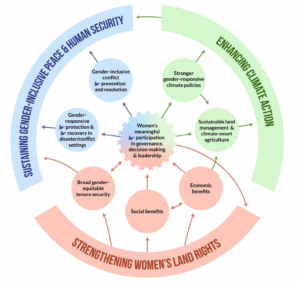Abstract: There is evidence from the development and humanitarian sectors that purposeful engagement of women can increase the impact of development. We conducted a literature review to examine whether this is also evident in conservation and natural resource management. The following themes emerged from our review: existing societal and cultural norms affect and generally limit how women can engage in conservation and natural resource management; women interact differently with the environment than men, so if they are excluded, their knowledge and perspectives on particular resources may not be considered in conservation actions; and there is often a lack of resources or dedicated effort by conservation or natural resource management programmes to understand and address the barriers that prevent women’s engagement. Although there was evidence of a positive relationship between the engagement of women and environmental outcomes, some studies showed that positive conservation outcomes do not necessarily benefit women, and when women are not considered, conservation activities can perpetuate existing inequities. We conclude that although the importance of integrating gender into conservation is acknowledged in the literature, there is a need to examine how women can be meaningfully engaged in conservation. This must go beyond treating women as a homogenous group, to consider intersectionality including race, ethnicity, age, religion, poverty and disability. In addition, conservation and natural resource management institutions need to address the inclusion of women in their own staff and programmes.
Source: Fauna & Flora International
Authors: Robyn James, Bridget Gibbs, Laura Whitford, Craig Leisher, Ruth Konia and Nathalie Butt
Citation: James, R., Gibbs, B., Whitford, L., Leisher, C., Konia, R., & Butt, N. (2021). Conservation and natural resource management: Where are all the women? Oryx, 55(6), 860-867. doi:10.1017/S0030605320001349




